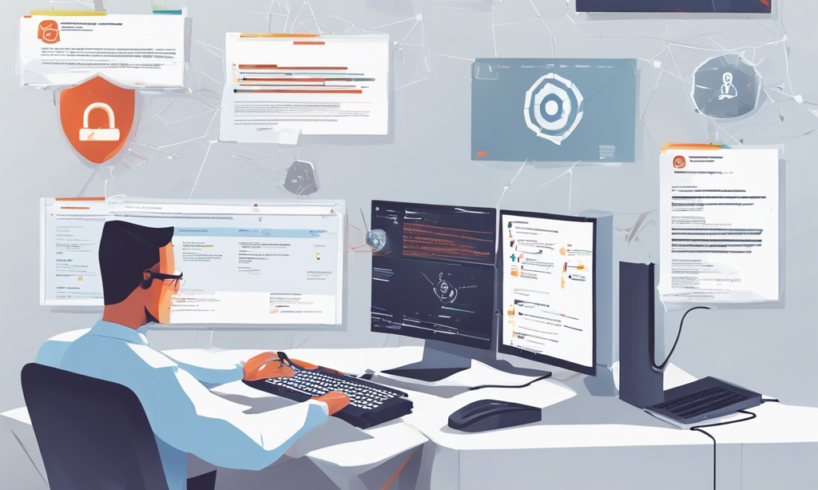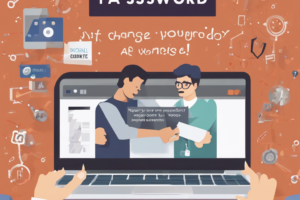
The Reality of Cybersecurity Threats
Cybersecurity breaches and cyberattacks are daily occurrences, leading to a creeping complacency among professionals tasked with managing and preventing such threats. This desensitization poses new risks to a company’s cybersecurity landscape, with potential outcomes such as negligence, lack of education, and an ineffective allocation of the security budget. Notably, approximately 90% of digital breaches originate from human error or behavior, highlighting the significant role of personnel in managing cybersecurity.
With the constant and evolving threat landscape, most employees face considerable hurdles to protect sensitive company data. However, businesses can turn this around by providing their teams with robust systems that empower collaboration and consistency in cybersecurity, effectively resisting and managing emerging threats through proactive planning and personnel training.
A Framework for Addressing Cyber Complacency
To counter cyber complacency, companies should adopt a robust cybersecurity framework. This framework should incorporate a strategic approach that enables an organization to prevent and respond effectively to cyberattacks. The cornerstones of this should include:
Conducting a Vulnerability Assessment
A vulnerability assessment is a critical tool for identifying weaknesses within an organization's systems and processes that could be exploited by malicious actors. Regular assessments remind teams of potential risks and the importance of vigilance in cybersecurity, thereby counteracting complacency. As emerging threats arise, an ongoing reassessment schedule is key to updating and strengthening cyber defenses.
Vulnerability assessments involve identifying and cataloging assets and employing a mix of automated and manual testing to expose security loopholes. The findings of these assessments can then guide the remediation of existing issues and the update of cybersecurity measures to handle emerging threats.
Developing and Communicating Security Policies
To be proactive in cybersecurity, organizations need to define solid security policies that address various subjects such as password management, data classification, acceptable technology use, and managing mobile devices. These policies require regular review to ensure their effectiveness and relevance, and their development should involve key stakeholders and company leadership.
Upon creating comprehensive and clear security protocols, companies must ensure they are understood and implemented cohesively by all employees. Regular communication, including routine updates and changes, promotes adherence to these policies, reinforcing the overall cybersecurity posture of the organization.
Preparing an Incident Response Plan
An effective incident response plan, which outlines actions and procedures in the event of a security breach, is crucial. This plan should stipulate steps for identifying, containing, recovering from, and analyzing incidents. Routine testing and refining of the plan based on these simulated exercises is key to ensuring its effectiveness.
Feedback from these tests can be used to improve innovative updates, making organizations more resilient and prepared for any potential cyber incidents.
Investing in Employee Skills and Development
Companies should invest in the development of cybersecurity skills within the workforce, as employees are often the first line of defense against attacks. Suitable training can help them detect and respond to threats, thereby safeguarding sensitive company and customer data.
Regular simulations, like fake phishing attacks, can provide practical experience and improve the ability of employees to identify threats. The more knowledgeable employees are about security, the less likely they will fall victim to phishing attacks.
Implementing User-friendly Cybersecurity Software
Adoption of accessible and straightforward cybersecurity tools is crucial for companies, especially small and medium-sized businesses, to boost their security posture. User-friendly software promotes regular use by IT staff, minimizes human error, and enhances adherence to security protocols.
Ending Cyber Complacency
In the field of cybersecurity, complacency is not an option. Through cultivating a culture of vigilance, attributing responsibility to employees, and equipping them with the requisite tools and knowledge, companies can boost their cybersecurity readiness and tackle the ever-changing challenges of the digital era.
About the author: Mike Toole, Head of Security and IT at Blumira, brings over a decade of experience from previous roles at Duo Security and Censys. His broad expertise covers compliance, network design, log monitoring, project management, and cross-platform IT.

Alejandro Rodriguez, a tech writer with a computer science background, excels in making complex tech topics accessible. His articles, focusing on consumer electronics and software, blend technical expertise with relatable storytelling. Known for insightful reviews and commentaries, Alejandro's work appears in various tech publications, engaging both enthusiasts and novices.
Follow us on Facebook







